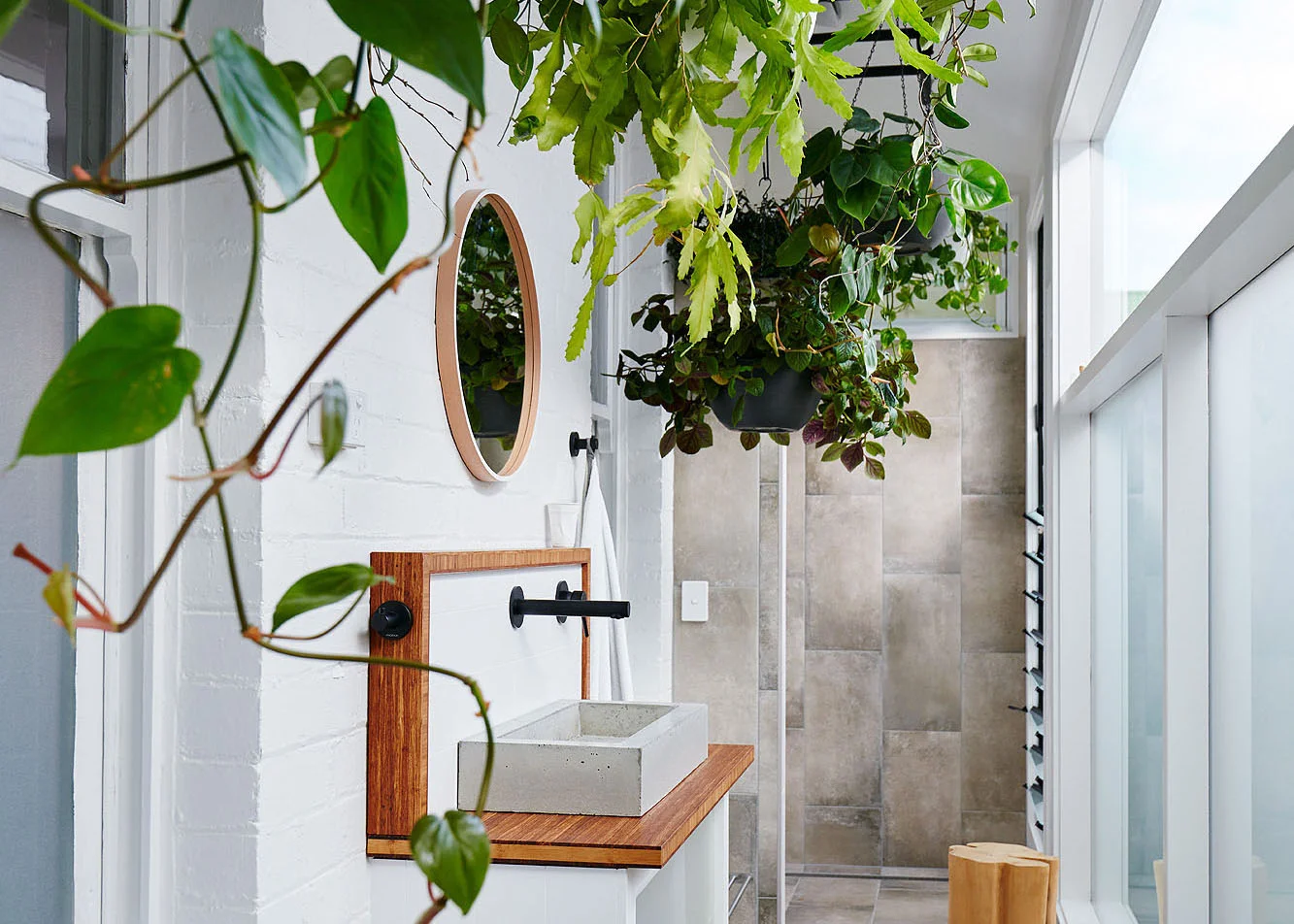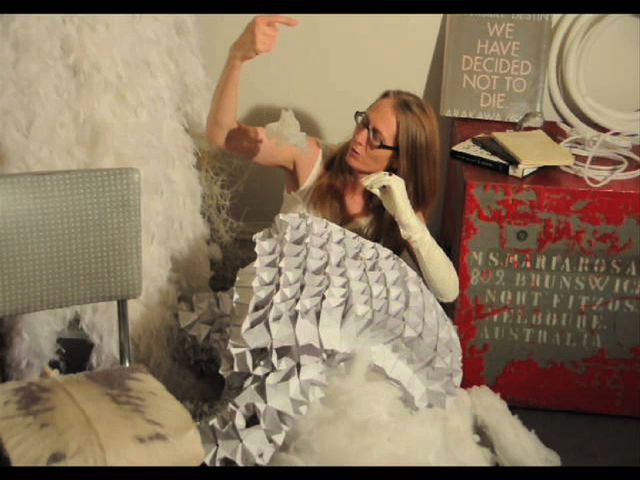Plastic Futures
DSC_0235
Plastic Futures flickr image pool The Plastic Futures exhibition opened today as part of the Victorian State of Design Festival, 2009.
Open Wide, Come Inside
This morning, my video presentation for the 3rd International Arakawa and Gins Conference was released here: http://ag3.griffith.edu.au/node/13 It works with a series of ideas that are becoming more important in the context of our broader design innovation research project, namely 'open systems', 'play', and 'emergence'. In general, Arakawa and Gins idea of 'reversible destiny' offers ways to rethink approaches to 'futuring'.
Here is the video, on Vimeo, with conference abstract below:
Open Wide, Come Inside: laughter, composure and architectural play. from pia ednie-brown on Vimeo.
This video is a presentation for an academic online conference in March 2010: the 3rd International Arakawa and Gins Architecture and Philosophy Conference. http://ag3.griffith.edu.au
It is the video presentation for the Art and Architecture stream of the conference. The video is composed as a mock episode of the children's TV show, Play School, intersecting with an academic paper.
This is the abstract for the paper:
My video presentation, which I am aiming to land somewhere between a lecture, an intimate confessional, and the pre-school TV show, Play School, is concerned with the way in which Arakawa and Gins have generated an evolving open system, and the mechanisms through which that system elusively hold together despite radical internal disparity. I suggest that this openness is sustained through simultaneously resisting coming to rest or finding explanatory closure, while maintaining a firm grasp on an elusive quality of connection. Turbulence, vitality and incongruity enter co-created loopiness, openly snowballing into a perpetual motion machine. Their buildings are an integral part of this machine, but their architecture is that machine.
But its not really a machine, it’s an organism-person-environment dynamic – a three part cleavage that plaits infinite strands of hairy connection into an open loop. What most arouses my interest, is the performative, transversal nature of their compositional glue – or in other words, what holds this dynamic together, and keeps it rolling. This I try to personify in terms of the architecture of shared laughter. The act of laughing together becomes an affective diagram and embodiment of their notion of bioscleave.
These characteristics of Arakawa and Gins make them exemplary cases of what I describe as ‘ethico-aesthetic know-how’ – or the art of emergence, which at best is a capacity to resonate in a heightened awareness of affectivity amidst all our organism-person-environment engagements. Here, we find a compositional coherence that is dynamically behavioural, something that might be found, say, in the complex of feelings that animate a face into a smile, rather than in the formal arrangement of a smiling face. And from there the question becomes, what can this teach about composing buildings that can laugh along with us?
SymbioticA Biotech workshop
 In November 2009, we held a 5 day intensive workshop in the 'digital wet laboratories' in the School of Applied Science (Biosciences) at RMIT. The workshop was designed and run by Oron Catts and Greg Cozens, of SymbioticA.
The workshop is an introduction to biological techniques and issues surrounding the manipulation of living systems. Artists, designers and researchers from various disciplines engage in the biological science lab to utilise language and techniques into their practice and research. Through applied ‘hands-on’ methods, the broader philosophical and ethical implications of human intervention with other living things will be explored.
The workshop is part of the ARC Discovery research project we are doing.
Regular posts were made to the Plastic Futures blog, where there will also be a twitter feed for any of the participants who engage in such practices.
A day by day account can be found in here: Plastic Futures
In November 2009, we held a 5 day intensive workshop in the 'digital wet laboratories' in the School of Applied Science (Biosciences) at RMIT. The workshop was designed and run by Oron Catts and Greg Cozens, of SymbioticA.
The workshop is an introduction to biological techniques and issues surrounding the manipulation of living systems. Artists, designers and researchers from various disciplines engage in the biological science lab to utilise language and techniques into their practice and research. Through applied ‘hands-on’ methods, the broader philosophical and ethical implications of human intervention with other living things will be explored.
The workshop is part of the ARC Discovery research project we are doing.
Regular posts were made to the Plastic Futures blog, where there will also be a twitter feed for any of the participants who engage in such practices.
A day by day account can be found in here: Plastic Futures
Where the action is.
Just about everything I've been doing lately is being registered on the other blog:Plastic Futures
SEAM Symposium and 'The Erotic Return'
 In September this year, I attended and presented at the SEAM symposium, convened by Samantha Spurr, Margie Medlin, and Benedict Anderson and held at the very lovely venue of Critical Path. This symposium was beautifully crafted and put together with a great deal of care. It was one of those conferences that you remember in terms of generating a feeling of community and enthusiasm for the act of gathering and sharing ideas. A far cry from some others, where it seems more about attaining notches on the refereed conference paper bedhead than a genuine desire to engage. It was, as such, extremely appropriate that Brian Massumi and Erin Manning were keynotes, given that they have a history of convening experimental workshop events that are utterly held together by that kind of generosity, and have not a sniff of referee about them.
In September this year, I attended and presented at the SEAM symposium, convened by Samantha Spurr, Margie Medlin, and Benedict Anderson and held at the very lovely venue of Critical Path. This symposium was beautifully crafted and put together with a great deal of care. It was one of those conferences that you remember in terms of generating a feeling of community and enthusiasm for the act of gathering and sharing ideas. A far cry from some others, where it seems more about attaining notches on the refereed conference paper bedhead than a genuine desire to engage. It was, as such, extremely appropriate that Brian Massumi and Erin Manning were keynotes, given that they have a history of convening experimental workshop events that are utterly held together by that kind of generosity, and have not a sniff of referee about them.
I felt very honored to give one of the keynote presentations on Friday, Sept 18th. Brian Massumi and Andrew Benjamin presented on the first night (17th), and myself with Erin Manning on the second night.
My presentation was called ‘The Erotic Return’, where I discussed how states of affective intensity have more to offer the research we do as designers than we have cared to acknowledge. The erotic is a somewhat exemplary category of affective intensity because it’s hard to really think about eroticism without and being aware of feeling, or bodily movements. As George Bataille wrote in his study on the subject: “Eroticism is an experience that cannot be assessed from the outside in the way an object can.”
 The tingles and flushes of emerging erotic experience are not usually acknowledged features of a design discourse. Encountering an excruciatingly beautiful drawing might make you tingle, taking you to the verge of an erotic experience, but I shudder to think of the awkward pause that might arise in a social or professional situation should you give voice to your experience of that tingle. What I was trying to convey in the presentation, through some project work examples, was: if we are affected by engaging with, say a creative work, we enter into an even more complex, dynamic, aesthetically driven process when we produce creative work, and that this is a very significant level of awareness for research by creative practice. This argument has strong links to those developed in my PhD ‘The Aesthetics of Emergence‘, but is a development upon it. I hope to work up a paper or three on the connections between emergent research methodology (commonly known as ‘post-design rationalisation’, which I thorough believe is both valid and necessary for creative work), and the erotic (or, what I am calling in a Nietzschian play, ‘The Erotic Return’).
The tingles and flushes of emerging erotic experience are not usually acknowledged features of a design discourse. Encountering an excruciatingly beautiful drawing might make you tingle, taking you to the verge of an erotic experience, but I shudder to think of the awkward pause that might arise in a social or professional situation should you give voice to your experience of that tingle. What I was trying to convey in the presentation, through some project work examples, was: if we are affected by engaging with, say a creative work, we enter into an even more complex, dynamic, aesthetically driven process when we produce creative work, and that this is a very significant level of awareness for research by creative practice. This argument has strong links to those developed in my PhD ‘The Aesthetics of Emergence‘, but is a development upon it. I hope to work up a paper or three on the connections between emergent research methodology (commonly known as ‘post-design rationalisation’, which I thorough believe is both valid and necessary for creative work), and the erotic (or, what I am calling in a Nietzschian play, ‘The Erotic Return’).
SEAM symposium and Eroticism
In September this year, I attended and presented at the SEAM symposium, convened by Samantha Spurr, Margie Medlin, and Benedict Anderson and held at the very lovely venue of Critical Path. This symposium was beautifully crafted and put together with a great deal of care. It was one of those conferences that you remember in terms of generating a feeling of community and enthusiasm for the act of gathering and sharing ideas. A far cry from some others, where it seems more about attaining notches on the refereed conference paper bedhead than a genuine desire to engage. It was, as such, extremely appropriate that Brian Massumi and Erin Manning were keynotes, given that they have a history of convening experimental workshop events that are utterly held together by that kind of generosity, and have not a sniff of the 'refereed' about it.
I felt very honored to give one of the keynote presentations on Thursday, Sept 17th. Brian Massumi and Andrew Benjamin presented on the first night, and myself with Erin Manning on the second night.
My presentation was called 'The Erotic Return', where I discussed how affective states have more to offer the research we do as designers than we have cared to acknowledge. The erotic is a somewhat exemplary category of affective intensity because it’s hard to really think about eroticism without and being aware of feeling, or bodily movements. Thought and feeling coincide. As George Bataille wrote in his study on the subject: “Eroticism is an experience that cannot be assessed from the outside in the way an object can.”
 The tingles and flushes of emerging erotic experience are not usually acknowledged features of a design discourse. Encountering an excruciatingly beautiful drawing might make you tingle, taking you to the verge of an erotic experience, but I shudder to think of the awkward pause that might arise in a social or professional situation should you give voice to your experience of that tingle. What I was trying to convey in the presentation, through some project work examples, was: if we are affected by engaging with a creative work, we enter into an even more complex, dynamic, aesthetically driven process when we produce creative work, and that awareness of affectivity is important for research by creative practice. This argument has strong links to those developed in my PhD 'The Aesthetics of Emergence', but is a development upon it. I hope to work up a paper or three on the connections between emergent research methodology (commonly known as 'post-design rationalisation' – which I thorough believe is both valid and necessary for creative work), and the erotic (or, what I am calling in a Nietzschian play, 'The Erotic Return').
The tingles and flushes of emerging erotic experience are not usually acknowledged features of a design discourse. Encountering an excruciatingly beautiful drawing might make you tingle, taking you to the verge of an erotic experience, but I shudder to think of the awkward pause that might arise in a social or professional situation should you give voice to your experience of that tingle. What I was trying to convey in the presentation, through some project work examples, was: if we are affected by engaging with a creative work, we enter into an even more complex, dynamic, aesthetically driven process when we produce creative work, and that awareness of affectivity is important for research by creative practice. This argument has strong links to those developed in my PhD 'The Aesthetics of Emergence', but is a development upon it. I hope to work up a paper or three on the connections between emergent research methodology (commonly known as 'post-design rationalisation' – which I thorough believe is both valid and necessary for creative work), and the erotic (or, what I am calling in a Nietzschian play, 'The Erotic Return').
National Portrait Gallery: Public Lecture
19th Sept, 2009.Info here: http://www.portrait.gov.au/exhibit/architecture/
cable tie lampshade
This lamp shade is made from the cable tie fabric produced by architecture student, Doris Dopfer, who designed and produced (with a 'cable-tie' knitting circle), this cable tie 'fabric'. Doris's work is featured in the Plastic Green book. In preparing for an exhibition we did in 2007, a cable knitting circle was formed and the rather time consuming process of making these plastic fabrics was sped along by numbers. Doris left us with half of the cable fabric made, and I have now out it to use as a light filtering device. Some tinkering still to go, but its hit a relatively stable stage now i think.It is filled with soft toy stuffing and white feathers to filter the light better. I like the dialogue between the ceiling rose and the lampshade.
you need to click on the image to see it properly :
advanced architecture lecture
 Today I gave a lecture at RMIT in the Asian Urbanism subject, at the request of Associate Prof. Sand Helsel. However, my brief was not to discuss asian urbanism, but to offer an outline of 'Advanced Architecture', being the name of one of our three research streams within the Architecture program, and School of Architecture and Design at RMIT.
Today I gave a lecture at RMIT in the Asian Urbanism subject, at the request of Associate Prof. Sand Helsel. However, my brief was not to discuss asian urbanism, but to offer an outline of 'Advanced Architecture', being the name of one of our three research streams within the Architecture program, and School of Architecture and Design at RMIT.
butoh becomings
Today we did a butoh workshop with Tony Yap and Mike Hornblow. I bought my architecture students and Adele Varcoe bought some fashion students. It was a taster for ways of exploring what the body can be (because, as Spinoza famously said, we really don't know what bodies can be), cast in relation to thoughts about knowing and embodying space and form.This was done as part of The Society of Molecules.
Parallax session
 Am talking today in a workshop with Veronika Valk at the Parallax conference in Melbourne.
Conference so far is wonderful. Am blogging from the Betsky/Manaugh session this morning. Given the coherent narrative of value Manaugh gave to blogging for thinking about architecture I felt the desire to blog immediately. I think the best part about this mornings two presentations is that the intersect on the issue of what 'counts' as architecture. The answer is that it doesn't end with buildings, especially not with those designed by architects. It doesn't even start there. Can't wait to talk about microbialites later, as the worlds first architecture.
Am talking today in a workshop with Veronika Valk at the Parallax conference in Melbourne.
Conference so far is wonderful. Am blogging from the Betsky/Manaugh session this morning. Given the coherent narrative of value Manaugh gave to blogging for thinking about architecture I felt the desire to blog immediately. I think the best part about this mornings two presentations is that the intersect on the issue of what 'counts' as architecture. The answer is that it doesn't end with buildings, especially not with those designed by architects. It doesn't even start there. Can't wait to talk about microbialites later, as the worlds first architecture.
Plastic Green book
I was most excited to collect some advance copies of the book I have editted, 'Plastic Green: Designing for Environmental Transformation'. It brings together a series of essays and projects from those involved in The Biospatial Workshop in 2007 at RMIT. There is some lovely work in there, some fairly confronting. I like watching peoples faces as they look though parts of it. Their faces tend to move through some funny shapes. I'll post more on the contents and people soon.

SymbioticA 1 day workshop.
Today I went to a one day SymbioticA workshop. Missed the end, as I had to catch a plane, but got to see most of it.It was incredible. I learnt a great deal, and as I sped off to the airport, I felt like my frontal lobe was going to explode.
Why? Because it took you into the thick of laboratory processes, teaching us super basic lessons like how to use a pipette to measure 0.5ml as part of an apparently 'untouchable' (for non-scientists) process of DNA extraction and 'gel electrophoresis' (a DNA analysis). All this, while throwing up larger socio-political questions with the help of a adjacent projector, such as the use of DNA analysis in forensics and the genetic modification of tomatoes. It was, as one would expect, no more than a light touch of a fingernail (not yet even scratching the surface), but enough to demonstrate that more of us should be exposed to this experience. I was convinced that what might seem like hype about the radical changes afoot via biotechnological processes is very real, and very much with us.
 And, on top of that, it was attended by a group of interesting, intelligent people.
And, on top of that, it was attended by a group of interesting, intelligent people.
innovation vs design?
Here are some examples of articles/texts that address the conflation or relationship between design and innovation (I will keep adding to this): John Thackara's 'In the Bubble. Designing for a Complex World'
Business Week, Innovation vs. Design
'Getting Schooled in Innovation', Business Week, Jan 3, 2005 "When people talked about innovation in the '90s, they really meant technology. When people talk about innovation in this decade, they really mean design."
On this blog, they ask does design have a role in rule making? Or, is design a way of innovating new systems based on new rules? They make this distinction: "Design is testing the rules and innovation is the result."
oxytocin + the emergent property of love.
Oxytocin is a hormone involved in the process of giving birth, but has also been called the 'hormone of love' and is claimed to be active in feelings of trust . In one report, it is discussed as part of an idea about love as an emergent property of the mammalian autonomic nervous system.
Lake Clifton
This week, I am visiting Lake Clifton, south of Perth and in the vicinity of Mandurah, reportedly the fasted growing city in Australia. Lake Clifton is also contains a roughly 6km long colony of thromobilites, a form of microbialite or growing rock-formations. Microbialites are the oldest known fossils, dating back to 3.5 billion years or so. They are made by cyanobacteria, the ancient life form that generated the oxygen atmosphere upon which life as we know it today depends. The Lake Clifton thrombolites are not this old, but they are the only known living examples, although their current status (ie living/dead) is apparently a debated point.I am visiting the site as part of the research we are doing with SymbioticA, who are doing a large project exploring the thrombolites and other linked environmental issues of the area. We will be discussing approaches to siting a speculative architectural future in this region.


Biotech Art Revisited
Attending the symposium and exhibition, Biotech Art Revisited, at Experimental Art Foundation
Plastic Futures enters phase two
Plastic Futures seminar entered phase earlier this week, which means we are moving more heavily into the designing of future scenarios. This is involving imagining ourselves in 2049, when we are much more elderly and working through design ideas about that period to explore and unfold potential futures, based on knowledge we can garner both in the present, and of the present. The aim is to stimulate some deep generative critique on what's potentially looming, and to discuss and debate these critiques. The outcomes of this seminar will be exhibited and debated at the Design Laboratory 2009: 2040 Systems
Cancer as a talent.
Eva Vertes looks to the future of medicine | Video on TED.com. This is a talk by a 19yr old who is trying to find a way to approach cancer in radically new ways. It had me returning to a future fiction story I started to write in the early-mid 90s, in which the capacity to develop cancerous cells had become a 'talent', because we had worked out how to manipulate cancer in desirable directions once it appeared. So, for instance, if you developed bowel cancer, you might direct this cancer into the capacity to digest certain substances in more efficient ways, or a brain cancer might allow for new sensory/thought processing capacities. Basically, the idea was that because cancer cells are versatile, we could use them as design tools.
In what Eva is saying here, cancer cells are perhaps initially part of a repair mechanism. So, perhaps we can fine tune this repair response, as she suggests, but towards new designs for bodily capacity.










